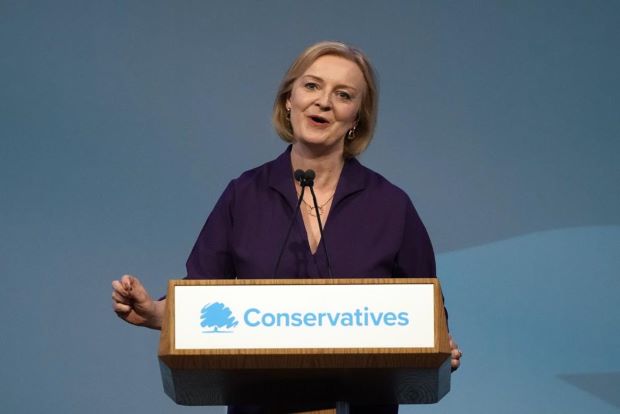Liz Truss named Britain’s third woman prime minister
By Mark Landler
LONDON — Britain’s Conservative Party announced Monday (5) its members had chosen Liz Truss to replace Boris Johnson as leader, turning to a hawkish diplomat and party stalwart to govern a country facing the gravest economic crisis in a generation.
Truss, 47, prevailed over Rishi Sunak, a former Chancellor of the Exchequer, whose resignation in July set in motion Johnson’s messy ouster. Her victory, which was widely expected in recent weeks after she took a commanding lead in the polls, makes her Britain’s third female prime minister, after Margaret Thatcher and Theresa May.
Like them, she will be greeted by a fearsome array of problems.
Double-digit inflation, a looming recession, labour unrest, soaring household energy bills and possible fuel shortages this winter — all will confront Truss as she moves into 10 Downing St. She also must repair a party deeply divided after Johnson’s turbulent three-year tenure, which peaked in 2019 with a landslide general election victory but descended into unrelenting scandals.
Truss, who served in Johnson’s Cabinet and was not part of the Tory rebellion that led to his departure, will formally assume the prime minister’s title Tuesday (6) in a meeting with Queen Elizabeth II at Balmoral Castle in Scotland, where the queen is vacationing. Johnson will bid farewell to the monarch just before that, drawing a curtain, at least for now, on his career as a front-line politician.
Truss, who was most recently foreign secretary, emerged from a crowded field of eight candidates by appealing to party members with a single-minded message of tax cuts and smaller government. These are reliable Tory party touchstones, but some economists said her proposals would do little to solve Britain’s problems, and could even worsen them.
Once the field narrowed to two candidates, Truss never relinquished her lead over Sunak. He would have made history of his own if he had won, becoming the first non-white prime minister in British history.
But Sunak’s message — that the government should not cut taxes before it tamed inflation — was less appealing to the 160,000 or so party members who cast ballots. Many also had not forgiven him for his role in Johnson’s ouster; he was one of two major Conservative figures, along with Sajid Javid, to resign from the Cabinet, prompting a wave of defections that made Johnson’s position untenable.
Truss has made a remarkable political journey to the top of the Conservative Party. Raised in a left-wing family, with a father who was a mathematician and a mother who was a nurse and teacher, she was an active member of Britain’s centrist party, the Liberal Democrats, as a student at Oxford University, once calling for a vote to abolish the monarchy.
Switching to the Tories after she graduated, Truss advanced through six ministerial posts under three Conservative prime ministers: Johnson, May and David Cameron. Like Cameron, she campaigned against Britain’s departure from the European Union in the 2016 referendum campaign, only to become a full-throated Brexiteer after the vote.
Truss is likely to be judged by her handling of Britain’s coming economic storm. With household energy bills spiking by 80%, and some economists predicting that inflation will top 20% by early next year, many believe Truss will have to announce sweeping measures to shield vulnerable families.
She has declined to give details on potential state aid and has ruled out measures such as fuel rationing or a new windfall profit tax on energy companies. At her final campaign event in London last week, Truss pledged not to impose any additional taxes, a promise that some experts said would be hard to keep.
-New York Times



Comments are closed, but trackbacks and pingbacks are open.